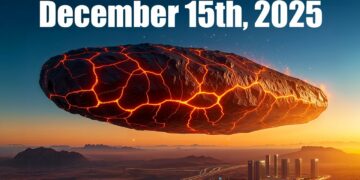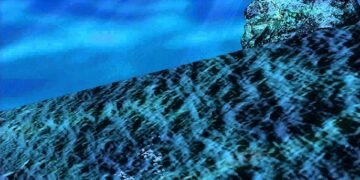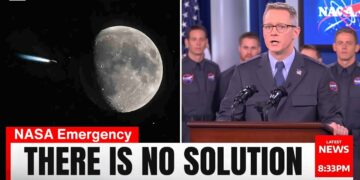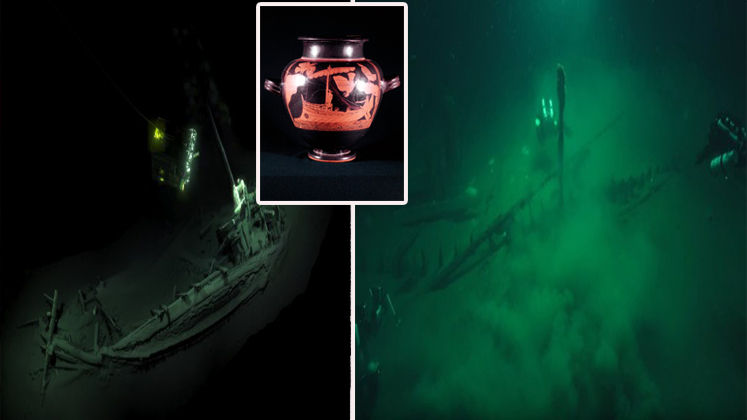The Voyager probes, humanity’s farthest-reaching spacecraft, have revealed unsettling discoveries about the edge of our solar system. Voyager 2, crossing into interstellar space in 2018, detected a shrinking heliosphere and a turbulent “red sea” of charged particles, raising concerns about Earth’s protection from cosmic radiation and the challenges of future space exploration. These findings suggest a more vulnerable solar system and a chaotic boundary, prompting questions about the safety of space missions and potential impacts on Earth.
Foundations of Deep Space Exploration
Deep space exploration emerged from decades of scientific and technological progress, fueled by humanity’s curiosity and Cold War rivalry. The Space Race began with the Soviet Union’s launch of Sputnik 1 in 1957, the first satellite to orbit Earth, prompting the U.S. to establish NASA in 1958. Early U.S. missions like Explorer 1 (1958) discovered the Van Allen radiation belts, while the Soviet Union achieved milestones like sending Yuri Gagarin into orbit in 1961. The U.S. responded with the Apollo program, landing humans on the Moon in 1969 (Apollo 11). NASA’s Mariner program advanced interplanetary exploration, with Mariner 2 (1962) flying past Venus and Mariner 4 (1965) capturing Mars’ first close-up images. Innovations like radioisotope thermoelectric generators (RTGs) and gravity assist maneuvers enabled missions like Voyager to explore the outer solar system.
Cold War Origins and the Space Race
The Cold War drove the Space Race, a technological and scientific contest between the U.S. and Soviet Union. Sputnik 1 (1957) showcased Soviet prowess, spurring the U.S. to create NASA and accelerate its efforts. Soviet milestones included sending the first animal (Laika, 1957) and human (Yuri Gagarin, 1961) into space. President Kennedy’s 1961 pledge to land a man on the Moon led to Apollo 11’s success in 1969, cementing U.S. leadership. The rivalry advanced rocket technology, satellite communications, and spacecraft design, laying the foundation for deep space missions like Voyager.
Key Early U.S. Space Missions
Early U.S. missions built the capabilities for deep space exploration. Explorer 1 (1958) confirmed the Van Allen belts, proving the scientific value of satellites. The Mercury program (1959) sent Alan Shepard into space in 1961, demonstrating human spaceflight feasibility. The Gemini program (1965–1966) tested spacewalks, docking, and long-duration flights, preparing for the Apollo program’s Moon landings. These missions honed technologies and skills critical for later interplanetary and interstellar exploration.
Technological Breakthroughs
Key innovations enabled deep space missions. Gravity assist maneuvers, first used by Mariner 10 (1973), leveraged planetary gravity to propel spacecraft, allowing Voyager’s multi-planet trajectory. RTGs, using plutonium-238 decay to generate electricity, powered Voyager in the dim outer solar system, producing ~470 watts at launch and sustaining operations for decades. NASA’s Deep Space Network (DSN), with large antennas in California, Spain, and Australia, enabled communication with distant spacecraft, detecting faint signals from Voyager 1, now over 14 billion miles away, despite 22-hour transmission delays.
Voyager Program Inception and Launch
Launched in 1977, the Voyager program capitalized on a rare 176-year planetary alignment for gravity-assisted visits to Jupiter, Saturn, Uranus, and Neptune. Voyager 2 launched on August 20, followed by Voyager 1 on September 5, with Voyager 1 on a faster trajectory. Designed by NASA’s Jet Propulsion Laboratory, both spacecraft carried instruments to study planets, moons, and magnetic fields, plus the Golden Record, a message for potential extraterrestrial life. The program marked humanity’s first step toward interstellar exploration.
Voyager 1
Launched September 5, 1977, Voyager 1 is the farthest human-made object, over 14.8 billion miles from Earth. It studied Jupiter (1979), revealing active volcanoes on Io, and Saturn (1980), examining its rings and Titan’s atmosphere. In 2012, it became the first spacecraft to enter interstellar space, crossing the heliopause. Powered by RTGs, it continues transmitting data, though systems are being shut down to conserve power. Voyager 1’s Golden Record symbolizes humanity’s cosmic outreach.
Voyager 2
Launched August 20, 1977, Voyager 2 conducted a grand tour of the outer planets. It explored Jupiter (1979), Saturn (1981), Uranus (1986), and Neptune (1989), the only spacecraft to visit the latter two. It discovered Io’s volcanism, Europa’s icy surface, and Neptune’s Great Dark Spot. Crossing the heliopause in 2018, Voyager 2 continues sending data from interstellar space, revealing new insights about the solar system’s boundary.
Powering Voyager
Voyager’s RTGs, using plutonium-238 decay, provided reliable power in the outer solar system, where solar panels are ineffective. Generating ~470 watts at launch, the RTGs’ output declines over time, requiring NASA to prioritize essential systems. This innovation enabled Voyager’s decades-long mission, proving critical for deep space exploration.
Communications via the Deep Space Network
The DSN’s global antennas enable communication with Voyager, despite signals taking over 22 hours to travel from 14 billion miles away. Highly sensitive, the DSN detects faint signals, sends commands, and manages spacecraft operations, ensuring Voyager’s data reaches Earth and supporting its ongoing mission.
Discovery of a Shrinking Heliosphere
In 2018, Voyager 2 revealed a smaller, weaker heliosphere than expected, the sun’s protective bubble of solar wind. Crossing the heliopause, it found the solar system more exposed to cosmic rays, posing risks for future missions, satellites, and potentially Earth’s climate and technology. This suggests a less robust shield against interstellar radiation.
Turbulent Plasma “Red Sea” at the Solar System’s Edge
Voyager 2’s crossing of the heliopause revealed a turbulent “red sea” of plasma, where solar wind meets the interstellar medium. This region, marked by hot, dense, and chaotic plasma flows, defies expectations of a smooth transition. The termination shock’s intense magnetic shifts and particle currents highlight navigation challenges for future spacecraft and the heliosphere’s weakening role.
Implications for Future Space Exploration
Voyager’s findings underscore significant challenges. A shrinking heliosphere increases cosmic radiation risks for astronauts, spacecraft electronics, and Earth’s systems. The turbulent plasma region demands robust spacecraft designs to withstand extreme conditions. These discoveries call for advanced radiation shielding, propulsion, and monitoring technologies to ensure safe, effective deep space missions, emphasizing the dynamic and unpredictable nature of the cosmos.






















